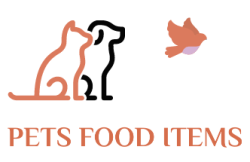Understanding the Importance of a Disclaimer
Pet blogs have become a significant part of the online community as more people embrace pet ownership and seek information to care for their furry friends. With the growing popularity of pet blogs, there comes a responsibility to provide accurate and reliable content, especially when it involves pet food naming. In this article, we will explore the importance of having a disclaimer for blog sites that discuss pet food items and how it helps protect both the blog owner and the readers.
The Growing Popularity of Pet Blogs
Pet blogs have experienced a surge in popularity over the past few years. Pet owners and enthusiasts are continually seeking advice, recommendations, and reviews on various pet-related topics, including pet food. Bloggers have found a niche in providing this valuable content, but with the influence they carry, there comes a risk of unintentionally misleading readers when naming pet food products.
The Risks Involved in Naming Pet Food
When bloggers discuss specific pet food items without proper disclaimers, there is a risk of readers assuming endorsements or factual accuracy. However, many bloggers are not experts or nutritionists, and their experiences may not align with every pet’s dietary needs. Without a disclaimer, readers might blindly trust the information and make uninformed decisions about their pets’ diets.
The Need for a Disclaimer
A disclaimer serves as a protective shield for both the blog owner and the readers. It clarifies that the content provided is based on personal experiences and opinions rather than professional advice. This distinction is crucial as it helps readers understand that they should consult a veterinarian or pet nutritionist for personalized recommendations. Additionally, a disclaimer can help blog owners avoid potential legal issues if readers misinterpret the information.
Legal Aspects of Naming Pet Food on Blog Sites
From a legal standpoint, a disclaimer can play a vital role in preventing liability issues. In some cases, readers might take a blogger’s word as a guarantee and purchase pet food products solely based on that information. If a pet experiences any adverse effects from the food, the blogger could face legal consequences for the misleading information. A well-crafted disclaimer can mitigate such risks.
Best Practices for Writing a Disclaimer
Crafting an effective disclaimer requires careful consideration of language and clarity. The disclaimer should clearly state that the blog owner is not an expert in pet nutrition and that the information provided is for general purposes only. It should encourage readers to seek professional advice and make informed decisions about their pets’ diets. The language should be easy to understand and free from any ambiguity.
Examples of Effective Disclaimers
- Example 1: Disclaimer: I am not a certified pet nutritionist. The opinions and experiences shared on this blog are based on my personal interactions with my pets. It is essential to consult a veterinarian before making any significant changes to your pet’s diet.
- Example 2: Disclosure: The content provided on this blog is for informational purposes only. It is not intended to be a substitute for professional veterinary advice. Always seek the advice of your veterinarian or another qualified professional regarding your pet’s diet.
Ensuring Clarity and Transparency
Transparency is key when it comes to disclaimers. Bloggers should avoid using vague language or burying the disclaimer in fine print. Placing the disclaimer visibly on the blog site ensures readers see it before engaging with the content. Transparency builds trust, and readers are more likely to appreciate a blogger’s honesty about their expertise.
Benefits of a Well-Written Disclaimer
A well-written disclaimer not only protects the blog owner legally but also builds credibility and trust with the readers. When readers know that the blogger is honest about their limitations and intentions, they are more likely to view the content with a critical eye, making informed decisions for their pets’ well-being.
Building Trust with Readers
As a pet blogger, earning the trust of readers is of utmost importance. By including a disclaimer, bloggers show that they prioritize their readers’ pets’ health and well-being over potential sponsorships or endorsements. Readers are more likely to engage with content when they know the blogger’s intentions are genuine.
Conclusion
In conclusion, a disclaimer for blog sites naming pets’ food items is a crucial aspect of responsible pet blogging. It protects both the blogger and the readers from potential legal issues and ensures that readers make informed decisions about their pets’ nutrition. By incorporating a clear and concise disclaimer, pet bloggers can build trust and credibility with their audience, fostering a supportive and knowledgeable pet-loving community.

